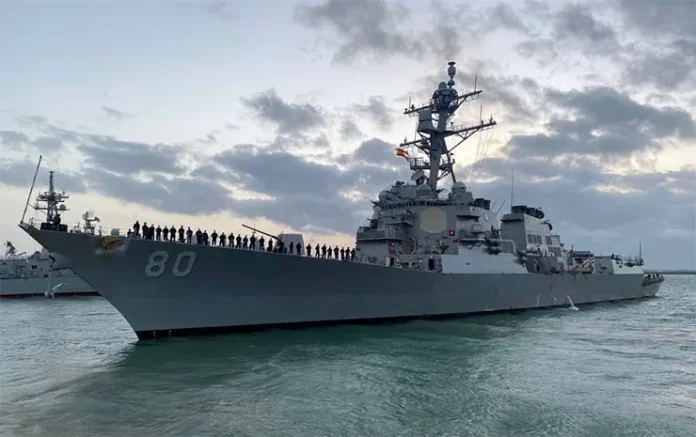Washington: The US Navy’s surface fleet, still short of its readiness goal of 75 combat-credible surface ships at any given time, is pursuing new ways to boost its readiness.
Then-Commander of Naval Surface Forces Vice Admiral Roy Kitchener, who retired in August, announced in January 2023 the fleet would aim to have 75 mission-capable ships. The ships would be well maintained and the crews well trained, such that they could be sent into combat on a moment’s notice if needed.
At the time, Kitchener declined to say how many ships were mission-capable. A Navy official not authorized to speak on the record about the numbers recently said it was in the “low 50s” at that time.
Over the past year, current Commander of Naval Surface Forces Vice Admiral Brendan McLane told reporters the fleet has been able to “get up to over 60, but now it’s kind of hovering between 50 and 60 ships on any given day.”
McLane, speaking to reporters ahead of the annual Surface Navy Association conference, said the best way to have more ready ships is to get ships out of maintenance on time.
In fiscal 2019, the surface navy saw 7,094 delay days, meaning the cumulative amount that all ships overran their planned maintenance periods’ timelines. In FY23, which ended September 30, maintenance delay days dropped to 4,006, according to Naval Surface Forces numbers. Those figures include delays on cruisers, many of which were put into a reduced readiness status for years and then struggled to come back online. Some of the cruisers have run years over schedule in their maintenance periods, contributing thousands of delay days to the tally.
For all surface ships except the cruisers in that lengthy modernisation program, according to McLane’s office, the fleet had 5,641 delay days in FY19. That dropped to just 2,136 in FY23. McLane said the fleet is making progress with on-time maintenance, but is struggling to fully achieve the goal of eliminating all delays.
To continue seeing improvements in maintenance performance, and therefore more ready ships, the fleet is doing a couple new things.
First, McLane said he’s looking at the success the fleet has in short depot maintenance availabilities to see how that could apply to longer yard periods. The forward-deployed destroyers operating out of Rota, Spain, conduct shorter, incremental availabilities that take about 100 days, instead of more traditional ones that might take six months.
McLane said those were completed “100% of the time on time.”
The Navy applied that same maintenance model to its Task Group Greyhound ships on the East Coast that stand ready to hunt Russian submarines if needed. For the past two years, the Navy saw a perfect on-time record with these, too.
“There’s more to learn there. And obviously we can’t expand that to everybody all the time, but there are some things that we’re looking at with our overall maintenance scheduling, to see if we could expand” that shorter maintenance model to more of the fleet, McLane said.













